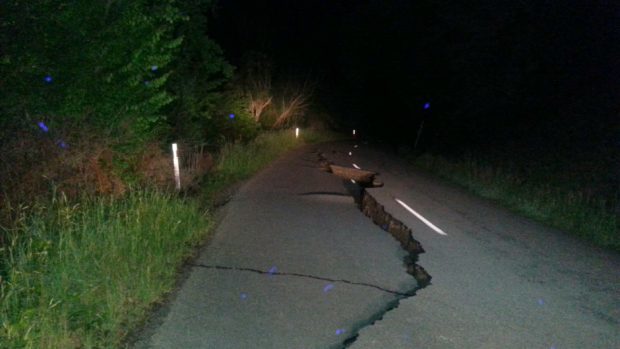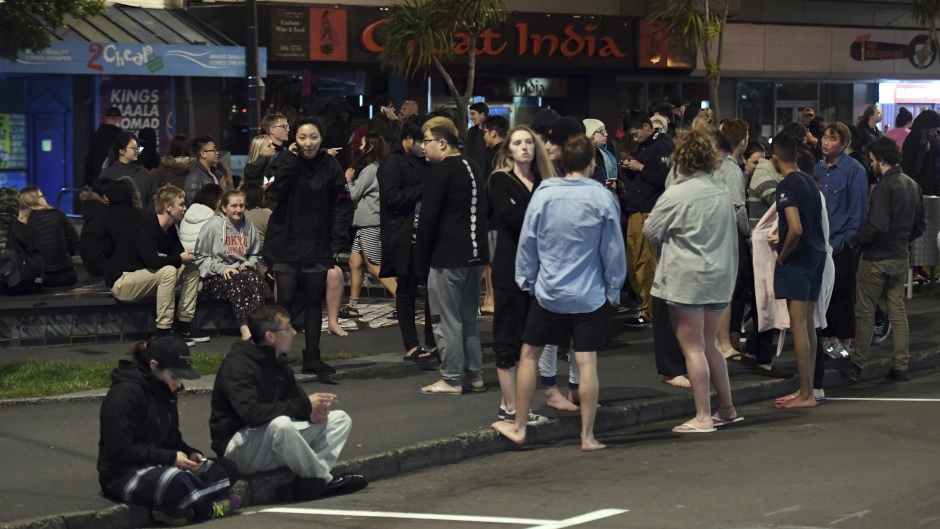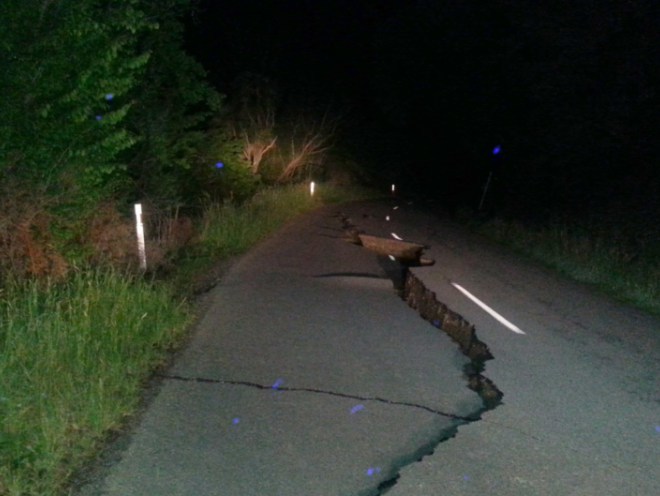Two people have been killed after a powerful earthquake and tsunami waves struck New Zealand’s South Island.
Emergency services warned people along the coast to move to higher ground to avoid tsunami waves.
The magnitude-7.8 earthquake struck in a mostly rural area close to the city of Christchurch but appeared to be more strongly felt in the capital Wellington, more than 120 miles away.
The quake was followed by a number of strong aftershocks.

It knocked out New Zealand’s emergency call number, 111, for about 10 minutes, police reported.
It caused items to fall from shelves and windows to break in Wellington, and forced hundreds of tourists onto the streets as hotels were evacuated.
New Zealand’s Ministry of Civil Defence and Emergency Management reported that a tsunami wave struck at about 1.50am and warned residents living in low-lying areas anywhere along the country’s east coast to move to higher ground.
The ministry had earlier sent out a message on Twitter saying there was no tsunami threat to the country.
It then sent out another message – “situation has changed – tsunami is possible” – before reporting that a tsunami had, in fact, hit.
There were no immediate reports of any major damage or injuries in Christchurch.
The quake brought back memories of a magnitude-6.3 earthquake that struck the city in 2011, destroying much of the downtown area and killing 185 people in one of New Zealand’s worst disasters.
Monday’s quake was centred farther away from the one in 2011.
In Wellington, 132 miles north of the quake’s epicentre, power was knocked out in some places and some windows were smashed and some chimneys collapsed.
The quake was centred 57 miles north-east of Christchurch, according to the US Geological Survey.
It was at a relatively shallow depth of six miles. Earthquakes tend to be more strongly felt on the surface when they’re shallow.
New Zealand sits on the “Ring of Fire”, an arc of seismic faults around the Pacific Ocean where earthquakes are common.



